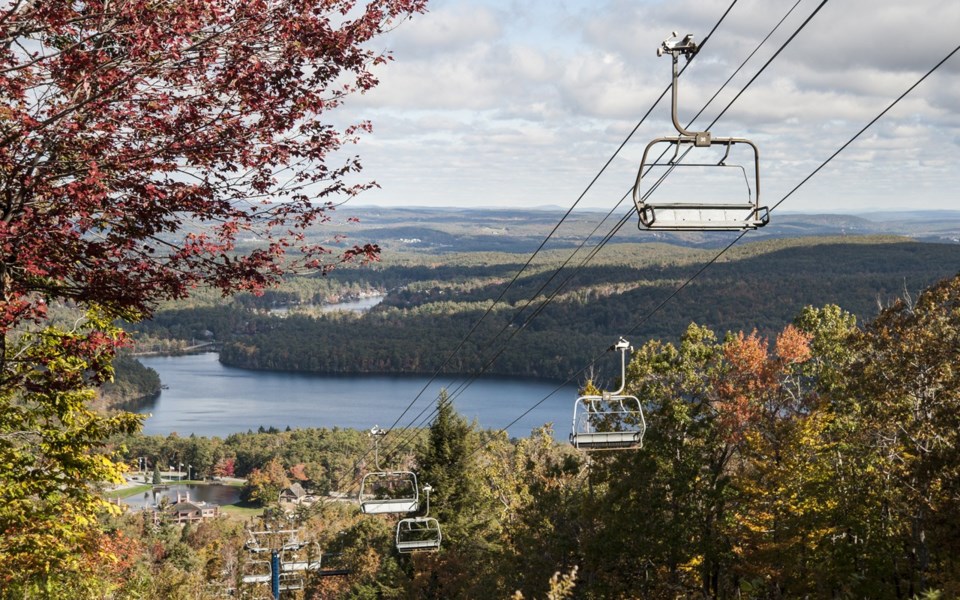Business consultant and chair of the National Ski Areas Association Economic Analysis Committee (NSAAC) Thomas Lithgow has broken down the numbers of two U.S. ski area studies and come up with some interesting observations.
Drawing on The Economic Analysis of U.S. Ski Areas and The Kottke National End of Season Survey, Lithgow paints a measured, optimistic portrait of the industry.
Using the Kottke survey, Lithgow noted that ski visitation was up in the 2016-17 season by 3.8 per cent over the previous season.
The survey estimates 54.8 million people skied or snowboarded in the 2016/17 season at U.S. resorts, higher than the five-year average of 54.1 million, but down from the 10-year average of 58.6 million.
According to Lithgow, vacationers are increasingly taking advantage of Thanksgiving and Martin Luther King Jr. long weekends to hit the slopes, putting less pressure on the Christmas season.
"There was a time when Christmas was 35 per cent of your revenue. These days, it varies widely. It could be 20 or 25 per cent," said Lithgow.
"We're seeing the resorts with lodging lifting revenue per person," he said, adding that food and beverage is another critical revenue generator.
"The pressure is on your ticket. Your yields on your ticket revenue are often difficult to move upwards, especially if you're selling a lot of seasons passes."
Spending on ski infrastructure increased from US$46 million in 2015-16 to US$54.7 million in in 2016-17, and if projections are accurate, spending will continue to accelerate in 2017-18 to US$71 million.
At US$130 million, spending on on-mountain facilities was slightly down from 2015-16 (US$157 million), but resorts expect to spend US$174 million in 2017-18.
Ski areas reported a number of opportunities and challenges facing the industry. For opportunity, operators listed proximity to growing local populations, new markets, and efforts to "differentiate" the ski experience as positives.
Weather, industry consolidation, wage legislation, access to capital, and availability of qualified workers are all seen as challenges.
Noting the trend towards consolidation among ski areas (Whistler Blackcomb's parent company, Vail Resorts, owns multiple U.S. resorts and is now competitively engaged with Alterra Mountain Company, which owns a dozen ski areas), Lithgow said independents are finding success in differentiating themselves and appealing to specific markets.
"You can create a marketing message that's unique and not corporately driven," he explained, adding that not everyone has the ability to travel to ski.
A good example is Wachusett Mountain in Princeton Mass. said Lithgow. Located an hour from Boston and an hour and 15 minutes from Providence, Wachussett has excelled at tailoring its offerings to large urban centres.
"They have figured out how to tailor their entire operation to their skier base—from corporate programs, to race programs, and night skiing," said Lithgow.
"They've made their identity be who they are surrounded by in a very unique way, and there are examples of Wachussetts all over ... You can roll into any region and find the operators who are speaking to a very specific group—a very loyal group."
One of the big advantages of buying Vail Resort's Epic Pass or Alterra's Ikon Pass is the ability to ski at multiple resorts around North America. But Lithgow pointed out that that's not an option for many people.
"Just because the big conglomerates have the sizzle of the continental season pass doesn't mean that every person has the opportunity or wherewithal to take advantage," noted Lithgow.
"The rhetorical question is who can afford to truly take advantage of it? It costs a lot of money to fly coast to coast to take advantage of resorts for three or four days."
North of the border, Canadian ski resorts are also seeing increases in on-mountain infrastructure, explained Chistopher Nicolson, president of the Canada West Ski Areas Association.
"Last year we ended up with about 9.2 million skier visits, and we're expecting that we will be right around there ... It's definitely going to be one of the best winters we've had," said Nicolson
The strong visitation is due to several factors including a strong regional economy, favourable exchange rate (for Americans), and an overall good (snowfall) season for Western Canadian ski areas, explained Nicolson.




